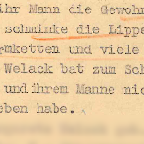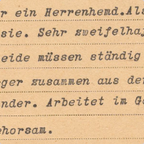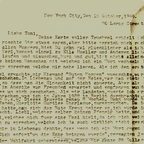Investigative Imprisonment and Declarations of Commitment

© Berlin State Archives.
_Halle's declaration of commitment

© Berlin State Archives.
Truck driver _Halle had been arrested in a raid and was suspected by the Gestapo of being a gay man. As early as 1926, a neighbour had reported them for wearing feminine connoted clothing and for presumed homosexuality. During the investigation in 1939, however, the Gestapo was not able to prove that _Halle was still wearing feminine connoted clothing. Through the declaration of commitment, the police tried to force _Halle to behave inconspicuously in the future.
A declaration of commitment had a threatening and deterrent effect because once it was signed, the police had an effective tool at hand. If those affected continued to wear their preferred clothing afterwards, the police could easily interpret this as a violation of police orders, similar to the withdrawal of their “transvestite license”.
A declaration of commitment was probably signed involuntarily and under great pressure. It was a way out of investigative detention, during which police investigations were carried out and prisoners potentially awaited trial. Investigative detention could last several days or even months and therefore could lead to the loss of housing and employment.






























